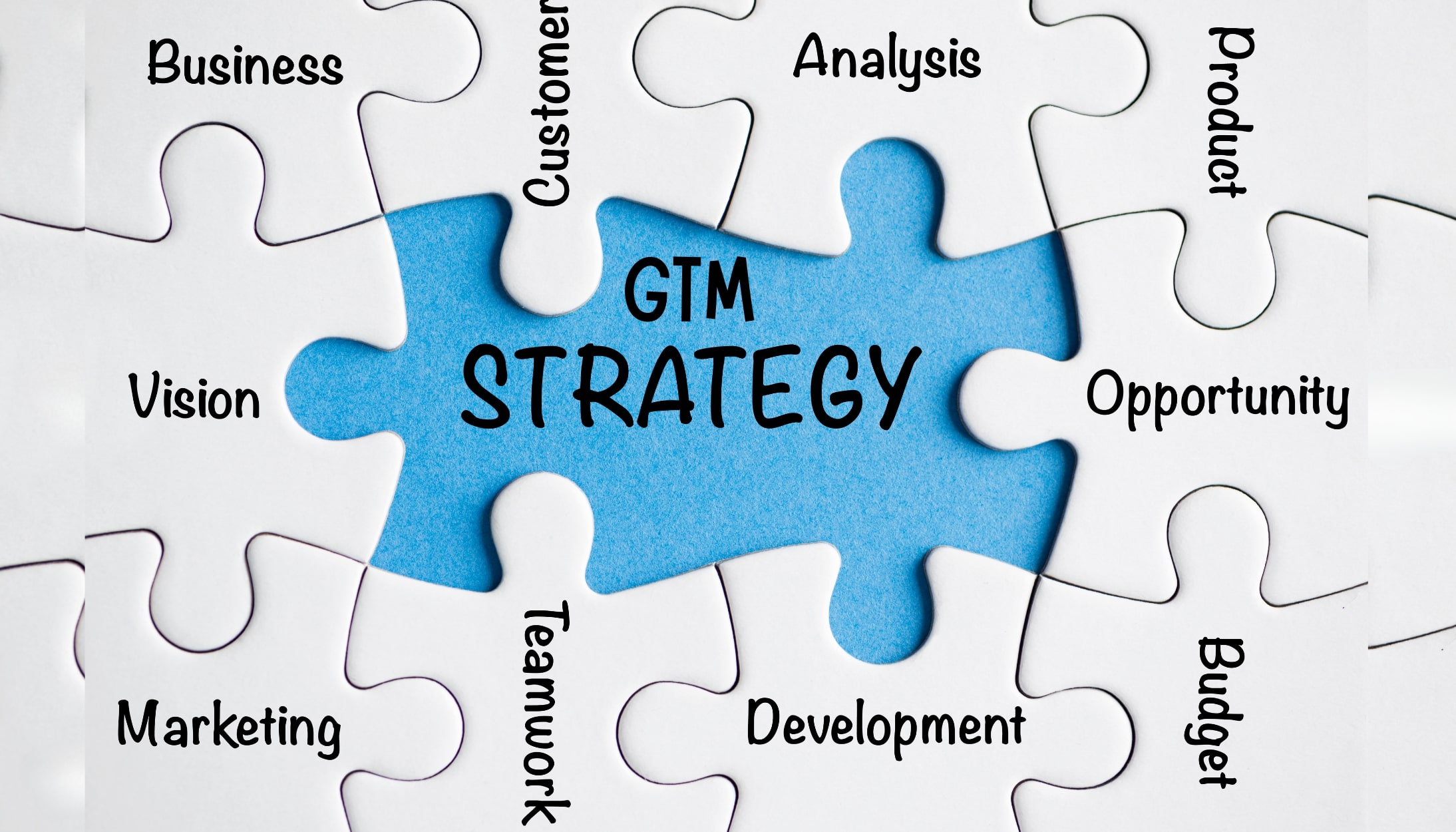Table Of Content
Introduction
A (GTM) go to market strategy is crucial for transforming an innovative product idea into a market success. Imagine you’ve developed a product that you believe will revolutionize the market. The excitement is palpable, but the path from concept to a successful launch can be daunting. Did you know that according to a survey by Harvard Business Review, 85% of new product launches fail to meet their financial targets? This is where a GTM strategy comes in.
A GTM strategy acts as a master plan, guiding your product from conception to successful launch. It’s not just for startups; studies show that companies with a well-defined GTM strategy are 31% more likely to achieve their sales goals. Whether you’re launching a new product, entering a new market, or scaling existing offerings, a GTM strategy is essential to navigate the complexities of the marketplace and maximize your product’s potential.
What is a go to market Strategy?
A go to market (GTM) strategy is a detailed plan that outlines how a company will introduce a product or service to the market. Think of it as a roadmap that guides businesses through the process of reaching their target customers and turning them into loyal users or buyers.
Here’s how a GTM strategy helps:
- Market Research: Understanding the market landscape, including who the competitors are and what customers need.
- Competitive Analysis: Identifying what competitors offer and how your product can stand out.
- Historical Data: Using past data to predict future performance and avoid potential pitfalls.
By combining these elements, a GTM strategy not only boosts the chances of a product’s success but also helps in identifying and mitigating risks along the way.
When to Launch a go to market (GTM) Strategy
A GTM strategy is crucial in various situations, not just for launching a new product. Here are some key moments when you need a solid GTM strategy:
- New Product Launch– Every time you introduce a new product, you need a specific GTM strategy tailored to that product. For example, imagine a skincare brand launching a new moisturizer designed to combat skin dryness. To ensure this product reaches the right audience and meets their needs, the brand would need a detailed plan that includes market research, targeted marketing, and effective distribution channels.
- Entering a New Market– Expanding an existing product into a new market also requires a fresh GTM strategy. For instance, if a clothing brand that traditionally sold only wholesale decides to start selling directly to consumers, it can’t just use the same approach it used for wholesale. It needs a new strategy focused on digital marketing, online sales platforms, and customer engagement tailored to individual shoppers.
- Scaling Product Sales– When you want to significantly increase the sales of an existing product, a GTM strategy can help manage the transition smoothly. Take, for example, a ceramic artist who had an online store before the COVID-19 pandemic but saw a surge in demand during the lockdowns. To handle this increased demand, they needed a strategy that included upgrading packaging, hiring more staff, and enhancing customer service. Without a GTM strategy, scaling up could lead to operational issues and customer dissatisfaction.
Benefits of a go to market (GTM) Strategy
Creating a solid go to market (GTM) strategy can significantly improve your chances of a successful product launch.
Here’s why it’s important:
- Clear Direction– A GTM strategy gives you a clear plan that outlines every step needed to launch your product. This means everyone knows what to do and when, making the whole process smoother and more organized.
- Team Alignment– When your GTM strategy is shared across all departments, from sales to marketing to product development, everyone works towards the same goals. This teamwork and cooperation are essential for a successful product launch.
- Efficient Resource Allocation– With a GTM strategy, you can use your resources—time, money, and people—more effectively. By focusing on the most important tasks first, you ensure that your efforts have the biggest impact, avoiding waste and maximizing your investment.
- Market Insight– A GTM strategy is based on thorough market research, giving you a deep understanding of your customers and competitors. This knowledge helps you make smart decisions about how to position and promote your product, making it more appealing to your target audience.
- Competitive Edge– In a crowded market, standing out is crucial. A well-thought-out GTM strategy highlights what makes your product unique and better than others. This gives you an edge over competitors and helps attract more customers.
10 Steps to Develop a GTM Strategy
- Market Research and Analysis
- Defining Target Audience
- Crafting Value Proposition
- Positioning and Messaging
- Pricing Strategy
- Sales and Distribution Strategy
- Marketing and Promotional Plan
- Customer Support and Service
- Feedback and Iteration
- Metrics and KPIs for Success
Every go to market (GTM) strategy is unique, shaped by factors like the market, target audience, product, and business goals. Whether you are launching a new product, entering a new market, or scaling an existing offering, a well-crafted GTM strategy is essential. Here are the key steps that can guide companies of all sizes towards a successful product launch.
- Market Research and Analysis– Start by diving deep into understanding your market. Identify who your competitors are and what your potential customers need. Look at what products are already available, how they perform, and where there are gaps your product can fill. This thorough research is the backbone of your GTM strategy, ensuring you make decisions based on solid data.
- Defining Target Audience– Next, pinpoint who your ideal customers are. Create detailed profiles, or buyer personas, that capture different segments of your audience. Include details like age, gender, interests, buying habits, and pain points. This segmentation allows you to focus your efforts on the most promising customer groups and tailor your messages to their specific needs.
- Crafting Value Proposition– Clearly articulate what makes your product unique and why customers should choose it over others. Your value proposition should directly address the problems your product solves and the benefits it provides. Make it clear, compelling, and distinct from what competitors offer, ensuring it resonates with your target audience.
- Positioning and Messaging– Develop strong, consistent messages that highlight your product’s benefits and differentiators. Your positioning statement should clearly communicate what your product does, who it’s for, and why it’s better than other options. Ensure these messages are used consistently across all marketing channels, from your website to social media to advertisements.
- Pricing Strategy– Decide on a pricing model that reflects the value of your product and is competitive within your market. Consider factors like production costs, competitor pricing, and customer perceptions. A well-thought-out pricing strategy can help position your product favorably and attract your target customers.
- Sales and Distribution Strategy– Choose the best ways to sell and distribute your product. This could include direct sales through your website, online marketplaces, or partnerships with retailers. Select channels that will most effectively reach your target audience. For example, selling a tech gadget online might be best, while a new beverage might benefit from being in physical stores.
- Marketing and Promotional Plan– Create a comprehensive marketing plan to promote your product. Use digital marketing strategies like social media campaigns, content marketing, email marketing, and search engine optimization (SEO). Include traditional advertising methods such as print ads, TV commercials, and radio spots if they suit your audience. The goal is to generate buzz and drive potential customers to take action.
- Customer Support and Service– Establish a robust customer support system to assist customers before, during, and after their purchase. Good customer service can increase satisfaction, encourage repeat business, and create positive word-of-mouth referrals. Make sure your support team is well-trained and ready to handle any issues that arise.
- Feedback and Iteration– After launching, gather feedback from your first users and customers. Listen to their experiences and use this information to improve your product and processes. Iterating based on real customer feedback helps you refine your offering and better meet customer needs.
- Metrics and KPIs for Success– Set clear, measurable goals to track the success of your GTM strategy. Key performance indicators (KPIs) might include sales targets, market share, customer acquisition costs, and customer retention rates. Regularly monitor these metrics to see how well your strategy is performing and make adjustments as needed to stay on track.
Tips for an Effective GTM Strategy
Creating an effective go to market (GTM) strategy involves more than just following steps. Here are some essential tips to ensure your strategy is successful:
- Customer Focus– Always keep the customer at the heart of your strategy. Understand their needs, preferences, and pain points. Tailor your approach to address these aspects, ensuring that your product truly resonates with your target audience.
- Data-Driven Decisions– Make sure your decisions are based on solid data and analytics. Use market research, customer insights, and performance metrics to guide your strategy. This helps you make informed choices and increases the likelihood of success.
- Adaptability– Be ready to adjust your strategy based on feedback and results. Flexibility is crucial for long-term success. Monitor your performance regularly and be willing to make changes to better meet customer needs and market conditions.
- Team Alignment– Ensure that all teams, from sales and marketing to product development, are aligned and working towards the same goals. Collaboration and cohesion across departments are essential for a unified and effective GTM strategy.
- Clear Communication– Maintain clear and consistent communication within your organization and with your customers. Clarity builds trust and ensures that everyone is on the same page. Effective communication helps avoid misunderstandings and keeps your strategy on track.
Case Studies/Examples
Learning from real-world examples can provide valuable insights into creating a successful go to market (GTM) strategy.
Here are a few notable examples:
- Apple’s iPhone Launch– Apple’s GTM strategy for the iPhone is a textbook example of leveraging strong brand positioning and high-profile marketing campaigns. Apple created massive anticipation and demand through carefully orchestrated product unveilings, strategic media placements, and a focus on the iPhone’s revolutionary features. This approach not only generated significant buzz but also positioned the iPhone as a must-have device, leading to unprecedented sales success.
- Dropbox’s Freemium Model– Dropbox used a freemium model to attract a large user base quickly. By offering a basic version of their service for free, Dropbox made it easy for users to try the product without any financial commitment. The seamless user experience and the value provided by the free version encouraged users to upgrade to the paid version for more storage and features. This approach helped Dropbox rapidly grow its customer base and convert many free users into paying customers.
- Slack’s Viral Growth– Slack’s GTM strategy focused on providing a superior user experience and leveraging word-of-mouth marketing. By creating a product that significantly improved workplace communication, Slack quickly gained popularity among teams and organizations. The intuitive interface and effective collaboration tools led to widespread adoption, with users recommending Slack to their peers. This viral growth strategy helped Slack become one of the fastest-growing business applications.
These case studies illustrate how different GTM strategies can be tailored to specific products and markets, highlighting the importance of innovation, customer focus, and effective marketing.
Conclusion
A go to market strategy is crucial for the successful launch of any product or service. By understanding the market, defining your target audience, and crafting a clear value proposition, you can position your product effectively and achieve your business goals. Remember to focus on the customer, be data-driven, and adapt your strategy as needed. With a well-executed GTM strategy, you can navigate the complexities of the market and set your product up for success.



 Free dropshipping courses
Free dropshipping courses




